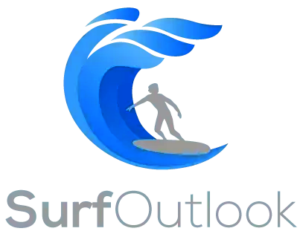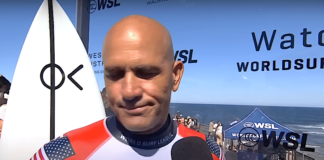Last updated:
You’re just getting into surfing. You’ve had enough good moments that you might already have fantasised about one-day turning pro. What an extraordinary lifestyle that would be. Travelling the world, meeting people, surfing for pleasure and cash. But then reality kicks in, and you realise that getting good at surfing is a journey rather than a destination. And the journey has no guarantees, or end. If you commit to a life of surfing, whether for pleasure or profession, you’ll have to put in some time and effort. You’ll have to face adversity.
Many people start surfing in the height of summer. The water is welcoming and the weather fine. Then, come autumn, fairweather surfers place their board in the garage, where it gathers dust until spring has sprung.
However, a few hardy souls decide that they won’t pack their board away for the winter. Instead, they’ll buy cold-weather gear. They’ll grimace as they take wetsuits off in icy car parks. They’ll grind through the challenge, upgrading their window of tolerance, while taking their surfing (and mental toughness) to the next level.
Or if the seasons are mild where you are, perhaps the discomfort trigger is other surfers. A surf bully told you off. Maybe you dropped in on someone by mistake. They sent you to the beach with tail between your legs. The pecking order is too intimidating and you get no waves. It’s embarrassing, and you wonder if you need to change beaches or give up altogether.
A few people don’t give up. Like the winter surfer, they push through to the next phase in their surfing evolution. The roots are deep enough now that moderate storms of adversity don’t discourage them. They keep on coming back.
Encountering real adversity
Then it happens. You get that injury. Or you see a shark. Or you have five terrible sessions – in a row. The ocean sometimes goes flat for two months. This whole surfing thing seems to be a waste of time. Who cares about waves and winds – it’s always crowded anyway. You’d be better off just doing something else. You tell yourself this but remember the feeling. Sliding down a wave, sunshine gleaming through the wall as you race toward the shoulder.

Don’t give up
When you feel like the world is against you. When it feels like everything is going wrong, understand that the real problem is: a phenomenon called homeostasis. Homeostasis is the tendency for life to opt for comfort over suffering. Putting ourselves in stressful situations disrupts the regularity upon which survival depends. From birth until death, we strive consciously and unconsciously to maintain a baseline of health and vitality. Our immune system attacks invaders. Our sweat ducts allow heat to dissipate. When it gets cold, we shiver. This is homeostasis—the necessary requirement to balance our internal environment with the external world.
Now consider surfing. In the context of homeostasis, you can see how winter surfing or a threatening situation might cause discomfort. Your nervous system sends signals to your brain, indicating that a forthcoming (or unfolding) situation might be perilous. A small reptilian neural nub activates – it’s called the amygdala – and puts you on high alert. This is the fear centre of your body and mind. When turned on, you either fight, take flight or freeze. You might be looking through windscreen wipers at a frothy autumn ocean when the amygdala activates a subtle version of flight. Simply, you reverse the car and retreat back to your home. Far better to enjoy a warm sofa and relaxing beverage. Why face this adversity? Why disrupt comfort?
How to overcome fear and discomfort
The key to bypassing homeostasis and switching off the amygdala is purpose. You need to feel more uncomfortable missing out on surfing than discomfort toward enduring cold water or crowds. Your purpose gives you a positive motivator, more potent than fear or craving.
Did you know that a wayward thought can knock you out of homeostasis, while simultaneously activating your fight, flight or freeze response? Yes, your brain can time travel – we all know that. It’s one of the most remarkable aspects of being human. Our prefrontal cortex – the executive attention centre – enables us to imagine new futures and reflect on past experiences. Unfortunately, as creatures who navigated a hostile environment for much of history, our perception is tinted by what researchers call the “negativity bias”. Even when things are going well, we’re on high alert for threats. This manifests as anxiety in individuals who haven’t developed sufficient coping skills.
To make things worse, through hedonic adaptation, objects we obtain quickly become normal. Homeostasis recalibrates so that the new car we bought quickly becomes routine. Having that car is your baseline now. Then the seeking starts again: what else in the environment do I need to feel whole? You activate the amygdala – the associated reptilian emotion is craving – and off we go in search of something to fill the void.
But in reality, the void is always full. In fact, instead of a void, imagine within you a star, emitting bright, warm light. That’s your life force. Your metabolism. Your negative entropy, as opposed to the tendency for energy just to burn out. In essence, you are a complex, regenerative life form experiencing conscious awareness. That’s you unafraid. You’re achieving coherence: calm, connected, creative – and you’re fully human. The amygdala is offline.
Practice fear and discomfort
In order to normalise discomfort you have to practice being uncomfortable. Every day, you need to push yourself slightly beyond your perceived limit. This is where the magic lives: in the unknown.
By constantly pushing your homeostatic edge, you achieve a new baseline. You then require much worse things than surfing in cold water to turn on your amygdala. This is resilience. This is grit. This is you achieving – living and breathing – your purpose. Never giving up.
Use knowledge of your nervous system to recognise the slide into primal states of activation and arousal. Recognise in real-time when resistance creeps in. That’s you veering towards comfort and avoiding challenge.
Live uncomfortably and then sink into periods of deep rest, rather than living a comfortable life with moments of distress.

Live uncomfortably and then sink into periods of deep rest, rather than living a comfortable life with moments of distress.
Your purpose is your motivator. Think big. If you don’t, no-one else will do it for you. Aim for the stars and you may just hit the moon. Or a cloud. Or your ceiling. But aim nowhere and you’ll go nowhere. Have many purposes. Such as:
- “I will be recognised as an excellent surfer anywhere I paddle out”
- “I will care for my family and give them everything I can”
- “I will build the most popular online surf magazine in the world”
Stand forward, look back
Now, for a little cognitive trick, take out the will. Because will implies the objective is unfulfilled (which it is) and that effort will be required. When homeostasis kicks in the purpose may not seem so appealing after all.
Rather, we create purposes such as:
- “I am recognised as an excellent surfer anywhere I paddle out”
- “I care for my family and give them everything I can”
- “I am building the most popular online surf magazine in the world”
You’re standing forward, looking back. Your future self takes the pressure off. You’re not going to fail. In a universe yet to unfold, you have already manifested your purpose. In this mental state, your epigenome activates subtle changes to your DNA. Certain genes are switched on or off based on what is happening in your life. This is called an epigenetic effect. You’re using your mind to signal to your body that you’re already in a certain environment. Your body responds accordingly, preparing you for good times ahead. It is a virtuous upward cycle. You realise there’s nothing to fear.
Be who you want to become
The ideal state is to operate from identity. Every time you remember your purpose, you’re bringing your future self into the present moment.
Now the real work begins because you’ll start putting in place the habits required to fulfil your purpose. Read, learn, ask others how they achieved great things. Discover what is needed to achieve your purposeful identity. Small habits are more powerful than large goals. They enable change by sidestepping homeostasis. Goals trigger resistance, especially if they’re too big, or a deadline is approaching too fast.
So carefully deconstruct the habits of the future you. Remember to start small. If the future version of yourself is a masterful surfer, what habits must you implement to support that identity. Start with stretching – 1-minute per day – and strength work – 1-minute per day. As this becomes habit, increase the time and effort. You’ve now developed two habits that will elevate your performance for life.
In summary
- Who are you? What is your identity-based purpose?
- Put in place habits that support the purpose. Start small. What can you do in a minute? Then two minutes, then five.
- When you feel resistance, can you push through the discomfort?
- Make not doing the activity more scary than suffering a little adversity.
Remember, if your purpose is to be a great surfer, then not going surfing on that rainy day should terrify you. What will you miss out on? What could you learn from experiencing those conditions?
Tame your reptilian brain with meditation and breathing techniques. Push yourself purposefully into discomfort. Upgrade your baseline comfort level – every day.
Oh – and never, ever give up.






